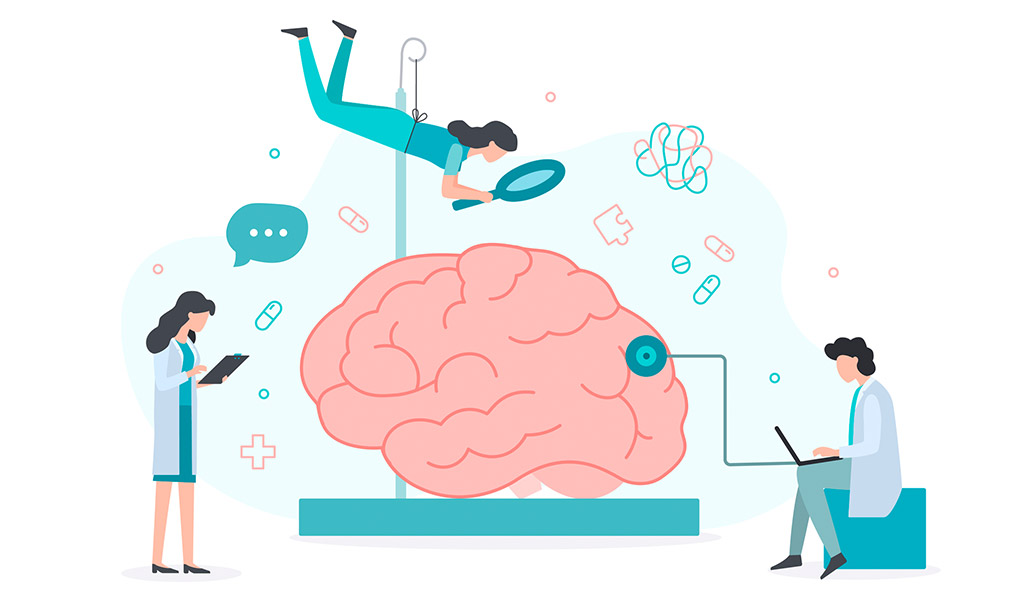Customer Experience in the Health Sector. In 2020 we’re seeing huge innovation in the health sector. Historically, the health sector has been slow to adapt and change. Niche tech and solutions are common and often go hand in hand with lengthy contracts. This has led to stagnation when it comes to innovating the very way we run healthcare facilities.
However, times are changing. With AI, data science, and automation rapidly advancing each day, the health sector is starting to take notice. Customer experience is crucial for any business in the modern world, but this is particularly true in healthcare where a good experience can mean vastly improving someone’s quality of life. Today we’re going to look at how to improve customer experience in the healthcare sector. Let’s take a look.
The People That Create Meaningful Experiences
Visiting a healthcare facility can often be a worrying experience. Patients feel vulnerable and put themselves in the hands of skilled healthcare professionals in the hopes of a better future. The customer-facing employees in a healthcare setting have the potential to greatly improve the customer experience with how they communicate and care for patients.
This isn’t a new concept. All businesses understand that the way they talk to customers has a dramatic impact on the experiences they have. However, the stakes are often much higher in a healthcare setting. Patients aren’t battling with a faulty product or an annoying technical issue with the service. Instead, their health is on the line. Even when the patient is visiting the facility for something positive, like the birth of a child or an elective surgery that will improve their quality of life, the risk of complications and the fear that comes with that are still present. It’s such a deeply sensitive and personal situation that requires careful attention and deliberate action.
When it comes to offering a great customer experience to patients, here are the things that can make a meaningful difference.
Making a good first impression: Many people are scared of healthcare facilities or anxious about their appointment. Immediately putting people at ease and vastly improve how they feel about the whole experience. All employees must be skilled at making a good first impression. This means being confident, positive, sporting a smile, and using small talk.
Keeping promises: Healthcare facilities can be busy and stressful environments for staff. Sometimes appointments run over or unforeseen events happen that disrupt the flow of the day. Some of these factors will be outside of the employee’s control. While that may be the case, it’s important to understand how it feels from a customer’s perspective. To the patient, their concerns are paramount. They want to feel that their concerns are being taken seriously and treated with the attention they deserve. This is why it’s so important to keep promises when it comes to things like appointment times, follow-ups, referrals, and so on. When something comes up that threatens keeping the promise, staff must communicate this clearly and compassionately. If you forget to call a patient back, own up to the mistake and apologize when you call them back. People appreciate honesty, particularly when it comes to anything connected to their health.
Employee training: People skills don’t come naturally to everyone. Some people have high emotional intelligence and others less so. Therefore, training is so crucial to bridge this gap and give all employees the skills they need to offer excellent customer care.
Take complaints seriously and act swiftly: As we already addressed, the stakes are higher in a healthcare setting. For every hour you leave a complaint unseen, the more frustrated and anxious the customer will become. It’s also important to note the role loyalty plays in the health sector. In other industries, customers can afford to be more fickle or experiment more. For example, if you had a great experience buying headphones from a company, you still might decide to gamble on a different company next time. What if you have an even better experience with this other company? Why not try? In the health sector, this happens less often. People stay loyal to organizations that deliver good experiences and will use them every time. The opposite is also true. One bad experience can taint a company for life and the customer will never use them again.
Overdeliver: Overdeliver where possible to make customers happy. With something as sensitive as healthcare, going above and beyond can strike a true emotional chord in patients.
Say thank you: This is basic human nature. People like to be thanked for their time.

Improve the Digital Experience
A study by Cisco found that up to 70% of patients are happy to communicate with their doctor virtually, rather than seeing them in person. Of course, this won’t apply to every situation, but it can apply to a large number of communications. For example, if a customer has concerns about their sleep patterns, weight, wants nutritional advice or advice on physical activity, this can be handled virtually in most instances. In these situations, the doctor doesn’t need to physically examine the patient in person. Improving the digital experience is also great for patients who live remotely, or those who struggle to travel due to mobility issues or lack of infrastructure.
You can improve the digital experience by offering a wide range of communication options and a clear path to those options.
Chatbots: Chatbots can successfully fill the role of a healthcare administrative, booking appointments for customers. The customer can simply hop on the website or app and book an appointment with the relevant details attached in a matter of minutes. Chatbots could also be used to offer general medical or wellbeing advice to patients. For example, chatbots are being used in the fight against COVID-19 to deliver public health advice to people. People can receive advice on when they should go outside, what protective garments to wear, how to social distance, and when they should contact local healthcare services.
Chatbots aren’t meant to replace the role of consultants. Medical issues can be complex and need a human to accurately assess the situation and develop a meaningful action plan. However, healthcare professionals often spend a lot of time talking to customers about general health advice that can be better handled by a chatbot. A great example of a healthcare chatbot is OneRemission, launched by the New York-based healthcare company of the same name. The app providers helpful advice about diet, exercise, and mental health to cancer survivors.
For other digital solutions, healthcare centers can utilize Live Chat, WhatsApp and Facebook Messenger chat services, video calling, and more to communicate with patients and expand their options. You can dramatically decrease the pressure on healthcare staff by optimizing the route through which patients get care. Making healthcare organizations more optimized and efficient is crucial, and the COVID-19 pandemic highlights why. Facilities can become overwhelmed in a short period of time and lead to shortfalls in patient care. Organizations that utilize omnichannel platforms and other digital solutions find themselves in a better position to adapt to rapid change.
Utilizing Data to Improve the Customer Experience
Data and AI can be used to improve the customer experience in healthcare. We are now collecting more data than ever, and this data can be leveraged to improve organizations. Analytics can be used to determine peak traffic times at healthcare facilities and changes can be made to accommodate this. It can also be used to identify an increase in patient questions relating to the same topic, or spikes in certain illnesses. The data you collect and analyze through your communication channels and omnichannel platform can be used to:
- Identify the average wait time for certain departments and inform customers.
- Performance metrics for staff at different times in the month or year.
- Identify a spike in complaints.
- Quickly identify areas for improvement or goals for the future.
Data can also be used to offer more personalized experiences to customers. If you have a patient you experience seasonal allergies and regularly contacts the facility during the allergy season, you can issue proactive advice before the season begins. This signals to the patient that you care about their wellbeing and are prepared to meet their needs. In the last decade, there has been a shift to more proactive and preventative medicine rather than just treating illnesses. The biggest shift has happened in the public, where people are now much more invested in their health than ever before. This means that patients want to be given regular healthcare advice to manage their conditions or simply their overall health. With personalization, you can deliver relevant advice to the right people.
Data analytics can also expose holes in the way the organization is run. Too often organizations in the health sector use lots of siloed apps and solutions. By leveraging data analytics and omnichannel platforms, you can bring this data together and see the bigger picture in a way that isn’t possible with a siloed approach.

Other Ways to Improve Customer Experience in the Health Sector
- Environment Control: Healthcare facilities are known for having harsh lights and cold surfaces. This comes down to practicality. White lights are the best light to assess patients and stainless-steel surfaces are easy to clean. An antique mahogany hardwood desk might look nice, but it’s not practical in a healthcare setting. However, that doesn’t mean you can’t make the environment more welcoming with art, reading materials, games, and so on. Recently, some hospitals have even started putting patients in control of their environment through the use of smart-control tablets. With these tablets, patients can adjust the lighting and entertainment system to suit their needs as they lie in bed.
- Easy access to data: All healthcare data must be unified under one system to provide the best customer experience. Of course, data privacy is a huge concern in healthcare due to the sensitive nature of the information. This has led many facilities to continue using the systems they are familiar with, despite better options being available. Information can still be protected and locked with permissions in a unified system, and in many ways, it does this better. Employees should be able to access patient information regardless of which facility the patient visits or which medium they use to communicate with the company.
- Driving patient engagement: You can’t improve the customer experience without actively engaging with patients. Don’t be a stranger. Keep in touch, even when they aren’t contacting you. You can do this through social media or regular emails. You can also run patient experience and satisfaction surveys to continually monitor who your patients feel about your organization.
- Be transparent: Visiting healthcare facilities can be worrisome enough without worrying about surprise bills or unexpected communications long after the appointment. Be as upfront and transparent as possible with everyone related to patient care. Around 70% of new patients come from referrals of existing patients. This means you can’t afford to not take care of your existing customers, meet their expectations, and exceed them whenever possible.




















